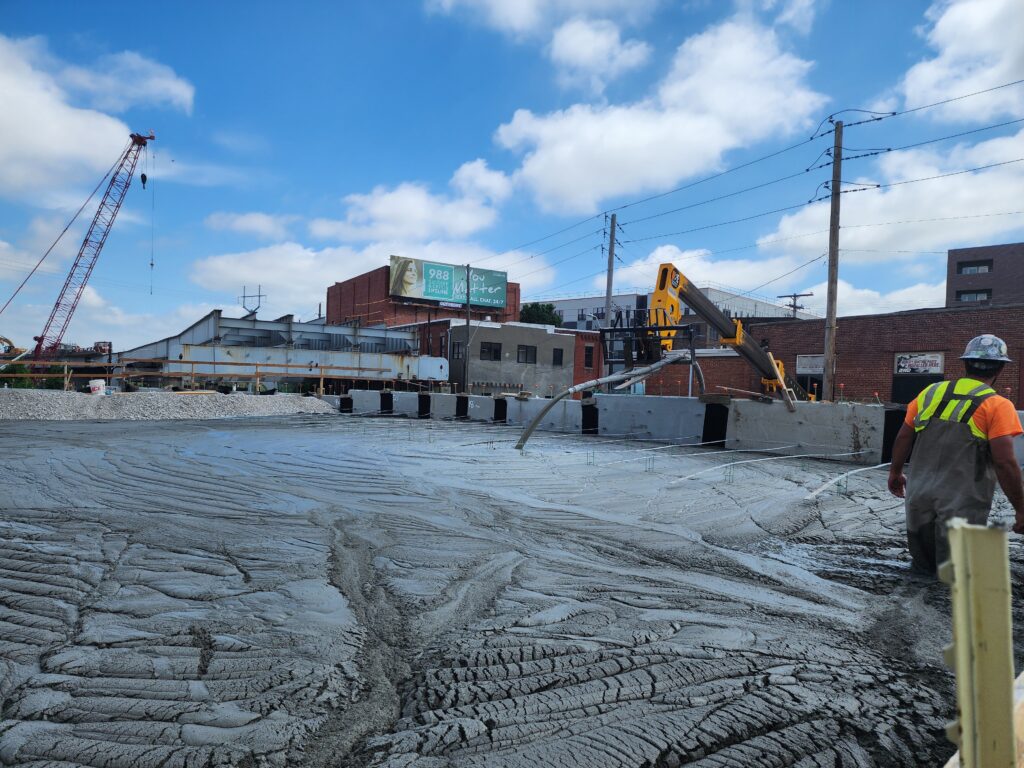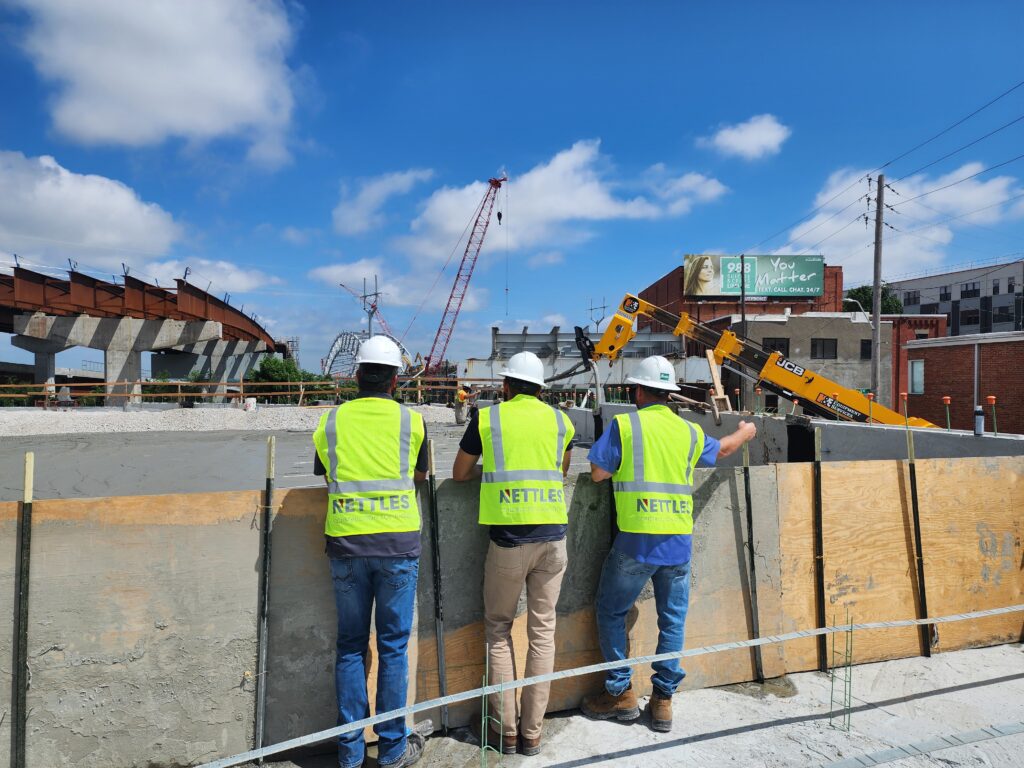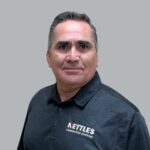Project Overview
Facility: Buck O’Neil Bridge
Owner: City of Kansas City and Missouri Department of Transportation
Location: Kansas City, MO
General contractor: Massman-Clarkson Joint Venture
Services: Engineered flowable fill

Project Summary
The Buck O’Neil Bridge, formerly known as the Broadway Bridge, is a triple arch bridge over the Missouri River, that serves as a key regional connection between downtown Kansas City and communities north of the river. The bridge opened in 1956 and is nearing the end of its projected lifespan, so the Missouri Department of Transportation and the City of Kansas City partnered to commission the design-build of a new bridge.

The Problem
Mechanically Stabilized Earth (MSE) retaining walls are important components of new bridge construction, preventing erosion of the structural backfill and bringing stability to slopes. When the construction of the new Buck O’Neil bridge began, the contractor needed a lightweight solution for backfilling the MSE retaining wall.
The backfill required a lightweight and low density solution that would minimize lateral pressure on the retaining wall and bridge tower. This was a high-volume pour that needed to be completed on schedule, so the general contractor was also looking for a flowable fill solution that was self-compacting and did not require soil preparation or reinforcement.

The Nettles Solution
Nettles Construction Solutions has decades of experience with engineered flowable fill, also known as lightweight insulating concrete or low-density cellular concrete. There were several reasons flowable fill was the right choice for this application, including:
- Fast installation: Flowable fill is self-compacting and hardens within 90 minutes. The Nettles team was able to pour several lifts (layers) of flowable fill a day, reducing overall construction time by 30-50%.
- Light weight and high strength: Flowable fill is one-fifth to one-half the weight of normal concrete or earthen fill. If the fill is too heavy, it can cause soil erosion and sinkholes. Flowable fill is light and yet extremely strong and durable, making it an ideal choice for MSE retaining wall backfills.
- High flowability: Due to space constraints, the fill needed to be poured from several hundred yards away, and a crane was used to lift the pump to the required height. Unlike traditional concrete, engineered fill is highly flowable and can be poured at height and into very narrow or constrained spaces.
The project took approximately 2 weeks to complete, with over 3,200 cubic yards of flowable fill poured.


Nettles is one of the largest and most respected subcontractors and installers of engineered flowable fill in the country. We work across the Midwest, including Texas, Oklahoma, Arkansas, Louisiana, Missouri, Kansas, the Dakotas, and more. To learn more, check out our other featured projects or get in touch with an expert.




